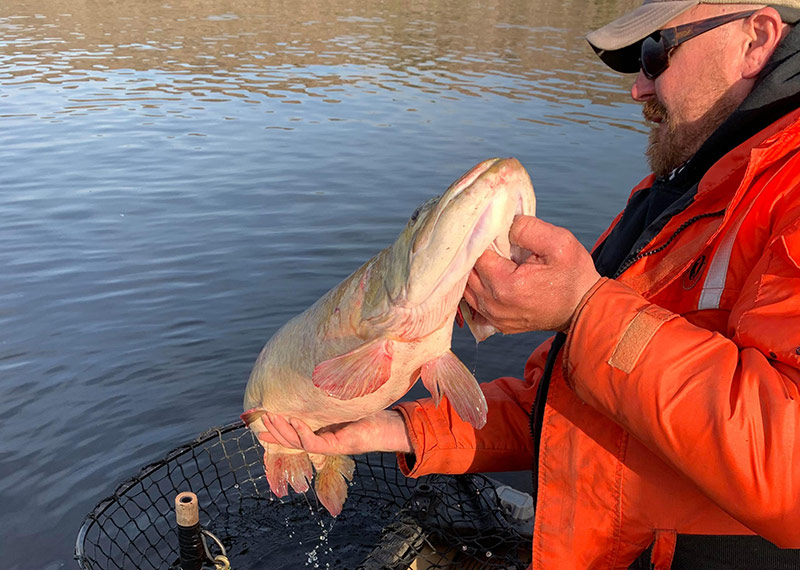UNB student project examines the sustainability of the St. John River's muskie population
Author: UNB Newsroom
Posted on May 10, 2021
Category: UNB Fredericton

A team of environmental management students at the University of New Brunswick have completed a project looking at the sustainability of the muskellunge in the St. John River.
Fourth-year students Abby Culberson, Darren Greeley, Riley Lavender and Emily Ruttan carried out the research as part of this year’s 4020 Capstone Practicum course at UNB. The course requires multidisciplinary teams to develop integrated solutions to real-world environmental or natural resource management problems in New Brunswick.
Muskellunge or muskies are large predatory fish which became naturalized in the St. John River after being introduced in Quebec in the 1970s. The presence of the species in the river is a polarizing topic as some groups have concerns about the impact on native species within the river, while others highlight the social and economic benefits of increased angling.
“Our overall project goal is to have a healthy, sustainable population of muskellunge in the St. John River,” says Culberson. “By sustainable we mean a population which stabilizes around the river’s carry capacity.”
“Currently, the angling regulations regarding muskies on the St. John River are five fish per person, per day, sized between four and 60 inches,” Culberson explains. “We wanted to see if this strategy affected sustainability. We also looked where the current population is in relation to the river’s carry capacity and if the fishery will be sustainable in the future.”
The research was undertaken in the area from Grafton Bridge to the Mactaquac Dam in southwest New Brunswick.
Using a sonar survey, the team established a baseline for their research by determining how many fish there were, where they were located and their size. This was followed up with a stakeholder survey to establish current angling practices on the river, as well as predict future angling pressure.
“We had 677 responses to our survey and the results suggest that there will be an increase of anglers looking to catch muskies,” adds Culberson.
With this information, the group built a dynamic population model to test the resilience of the muskie population in response to an increase in angling mortality.
“Our findings suggested that the current management works for the current angling pressure, and that the muskie population is stabilizing,” says Culberson. “However, as angling pressure increases in the future, regulations may need to be adjusted.”
The group presented their findings at the 4020 Capstone Project virtual presentation event and created a poster to highlight their key findings.
“The 4020 Capstone Project provides a unique experiential education opportunity for students, allowing them to make a real difference to environmental management in New Brunswick,” says Dr. Ted Needham, assistant dean of the faculty of forestry and environmental management. “The team produced thoughtful results and I hope the community partners they worked with are able to use their work to pursue additional research and inform future management strategies.”
The group would like to thank the Muskies Canada – Saint John River Chapter, Canadian Rivers Institute, New Brunswick’s Department of Natural Resources and Energy Development, and the Ohio Department of Natural Resources.
Media contact: Fiona Hendrie
Photo: Catching a muskie on the St. John River as part of a research project for UNB’s 4020 Capstone Practicum.
